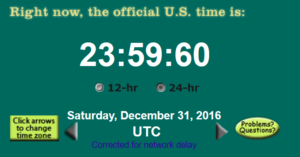LYRICS
Wait a second?
I can’t wait a second
’cause I reckon
The Earth is slowing down
It’s been found
The Earth is slowing down
From going ’round
Leap a second
And before long
A second second
Thus this song
The Earth is slowing down
It’s been found
The Earth is slowing down
From going ’round
The spinoff of taking a spin off
You scoff?
Well, do you wanna get off?
’cause
The Earth is slowing down
It’s been found
The Earth is slowing down
From going ’round
It’s that mean solar time
Or UT1
Try to coordinate Universal time
Or UTC
And I for one can see
You won’t even give away
The time of day
No way
The Earth is slowing down
It’s been found
The Earth is slowing down
From going ’round
Time Traval (aka LeapSecond).mp3
ABOUT THE SONG
Style: ExperiMental Music
Chords: E B E –> 7th fret and slide down to E
Recording: digital 8-track stereo recorded live
This song is about the Earth slowing down. Why is the Earth slowing down?
The Earth is slowing down and speeding up for many reasons. In general, the Earth is slowing down it’s rotation due to friction. The wind and the oceans and mountains, tides and gravity cause friction that slows an object in motion.
A leap second is a one-second adjustment that is occasionally applied to Coordinated Universal Time (UTC) in order to keep its time of day close to the mean solar time, or UT1. Without such a correction, time reckoned by Earth’s rotation drifts away from atomic time because of irregularities in the Earth’s rate of rotation. Since this system of correction was implemented in 1972, 27 leap seconds have been inserted, the most recent on December 31, 2016 at 23:59:60 UTC.
So, every once in a while humans travel a second forward in time. “Specifically, a positive leap second is inserted between second 23:59:59 of a chosen UTC calendar date (the last day of a month, usually June 30 or December 31) and second 00:00:00 of the following date.”
Why is the moon falling farther away from us?
The migration of the Moon away from the Earth is mainly due to the action of the Earth’s tides. The Moon is kept in orbit by the gravitational force that the Earth exerts on it, but the Moon also exerts a gravitational force on our planet and this causes the movement of the Earth’s oceans to form a tidal bulge.
Vocals, Guitar, Organ
Part of the 4D Music Experiment
by Daniel Brouse
